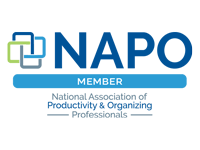| Meal planning and kitchen organization are essential tools to simplify daily cooking, save time, and reduce stress in the kitchen. With the right strategies, you can create an efficient, organized space that makes meal prep faster and more enjoyable. Here’s a three-point guide to help you master meal planning, organize your pantry, and design an efficient kitchen layout. 1. Effective Meal Planning: A Week’s Worth of Simplicity Meal planning is a powerful way to stay organized, save money, and reduce food waste. Here are some tips to master the art of meal planning: Set a Weekly Menu: Start by planning out meals for the entire week. Decide on breakfasts, lunches, dinners, and snacks, taking into account ingredients you already have in your pantry and refrigerator. A good tip is to use similar ingredients across multiple meals to minimize waste. Batch Cooking and Prep: Spend some time during the weekend to chop veggies, cook grains, or even prepare complete meals that can be stored in the fridge or freezer. This saves precious time during busy weekdays. Use a Meal Planning Template or App: Whether you prefer pen and paper or a digital app, having a template helps you keep track of what meals are planned and what ingredients are needed. This can prevent last-minute grocery runs and ensure you stick to your planned meals. 2. Pantry Organization: Creating an Inventory System An organized pantry is the backbone of efficient meal prep. Keeping your pantry well-stocked and neatly arranged can streamline your cooking process and prevent you from buying unnecessary items. Categorize by Type: Group similar items together—grains, canned goods, spices, baking supplies, etc. Use clear containers for loose items like pasta or flour and label everything. This makes it easy to see what you have at a glance. FIFO (First In, First Out) Method: Arrange items based on expiration dates. Place newer items behind older ones, ensuring you use up ingredients before they go bad. This not only saves money but also reduces food waste. Create an Essentials List: Keep a running list of pantry staples like oil, spices, and grains. Replenish these regularly so you never run out of key ingredients when it’s time to cook. 3. Kitchen Layout: Designing for Efficiency An efficient kitchen layout can make all the difference when it comes to cooking with ease. Whether your kitchen is large or small, organizing it thoughtfully helps maximize productivity. Create Zones: Divide your kitchen into zones based on function—prep area, cooking zone, cleaning area, and storage. For example, keep knives, cutting boards, and mixing bowls near your prep station, and pots, pans, and utensils near the stove. Keep Frequently Used Items Accessible: Store commonly used tools and ingredients within arm’s reach. Place frequently used pots, pans, and utensils close to the stove, and keep everyday spices and oils in a convenient spot. Optimize Counter Space: Keep counters clear of clutter to maximize workspace. Store bulky appliances, like stand mixers or blenders, in cupboards unless they’re used daily. This gives you more room to prep meals without feeling cramped. By incorporating effective meal planning, maintaining an organized pantry, and optimizing your kitchen layout, you can create a streamlined, stress-free cooking routine that saves you time and effort every day. A well-organized kitchen is the key to enjoying the process of meal prep, and ultimately, preparing healthy, delicious meals with ease. For more organizing and decorating ideas, please Click Here |

Decluttering
Tidy Home, Tidy Mind: The Mental Benefits of Organization
A cluttered space often leads to a cluttered mind. When our surroundings are chaotic, it can be difficult to focus, relax, or even find motivation















